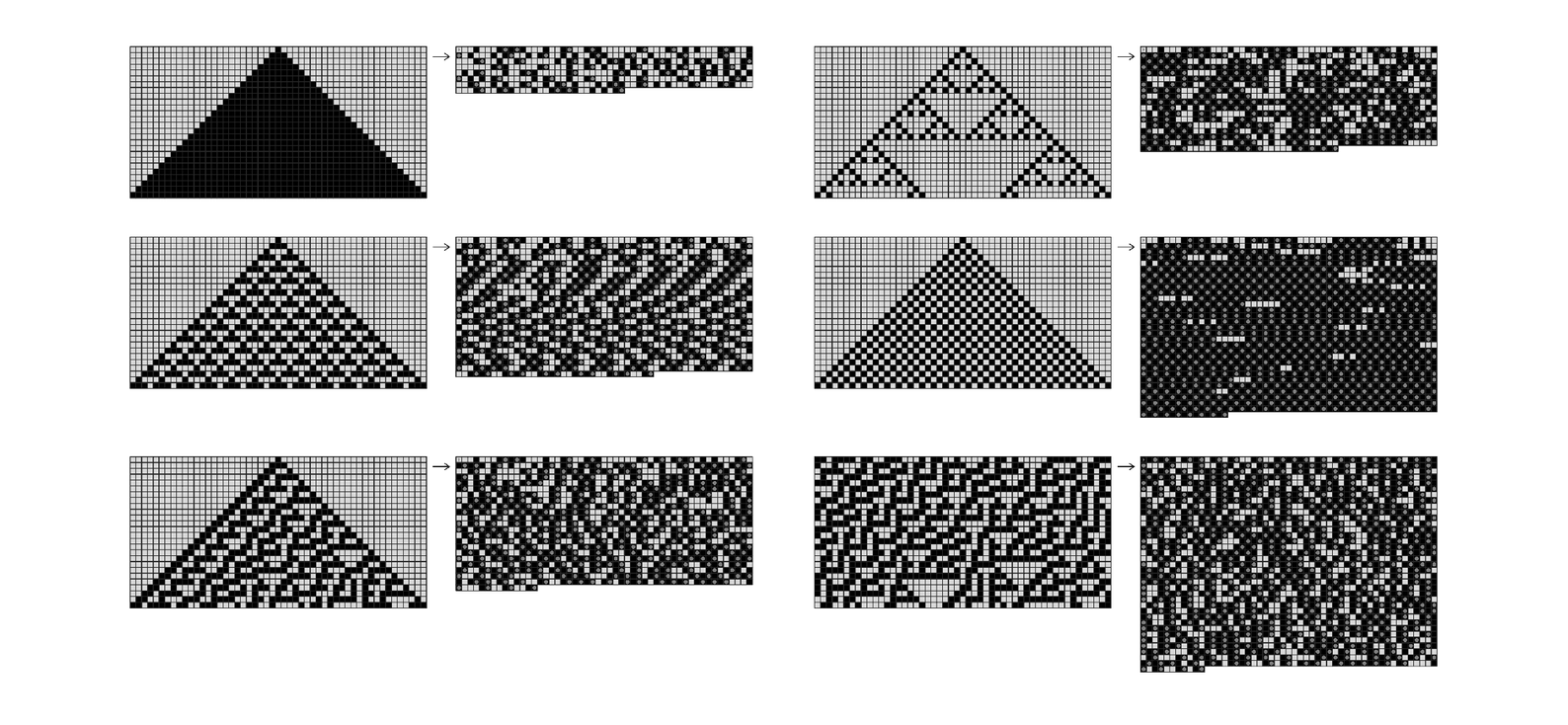For small numbers, all these approaches yield representations that are at least somewhat longer than the explicit sequences shown in picture (a). But for larger numbers, the representations quickly become much shorter. And this means that they can potentially be used to achieve compression in run-length encoding.
The pictures at the bottom of the previous page show what happens when one applies run-length encoding using representation (e) from page 560 to various sequences of data. In the first two cases, there are sufficiently many long runs that compression is achieved. But in the last two cases, there are too many short runs, and the output from run-length encoding is actually longer than the input.
The pictures below show the results of applying run-length encoding to typical patterns produced by cellular automata. When the patterns contain enough regions of uniform color, compression is achieved. But when the patterns are more intricate—even in a simple repetitive way—little or no compression is achieved.

Examples of applying run-length encoding to patterns produced by cellular automata. Successive rows in each original image are placed end to end so as to give a one-dimensional sequence, then run-length encoded, and then chopped into rows again. Compression is typically achieved whenever most of the image consists of regions of uniform color.